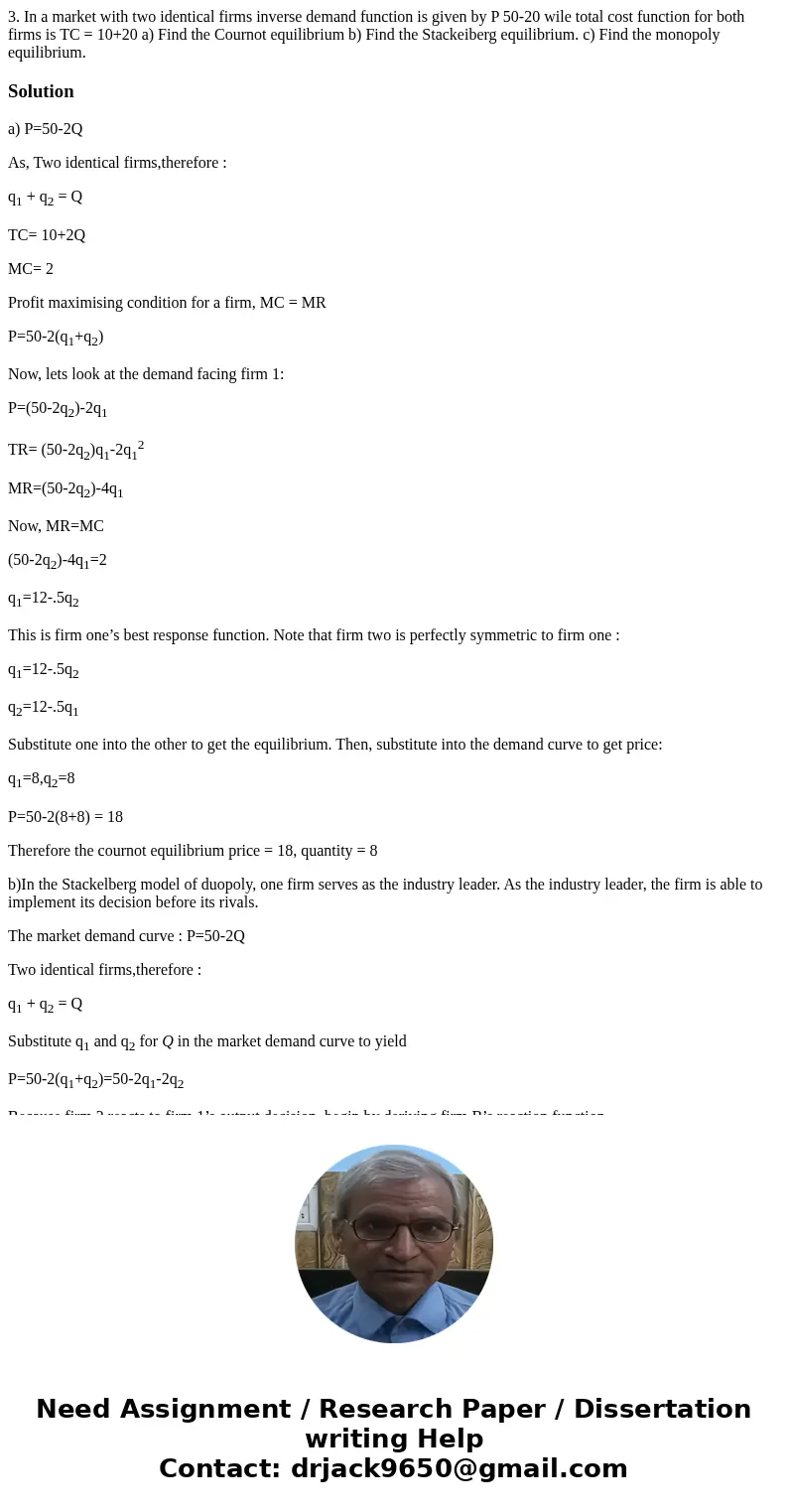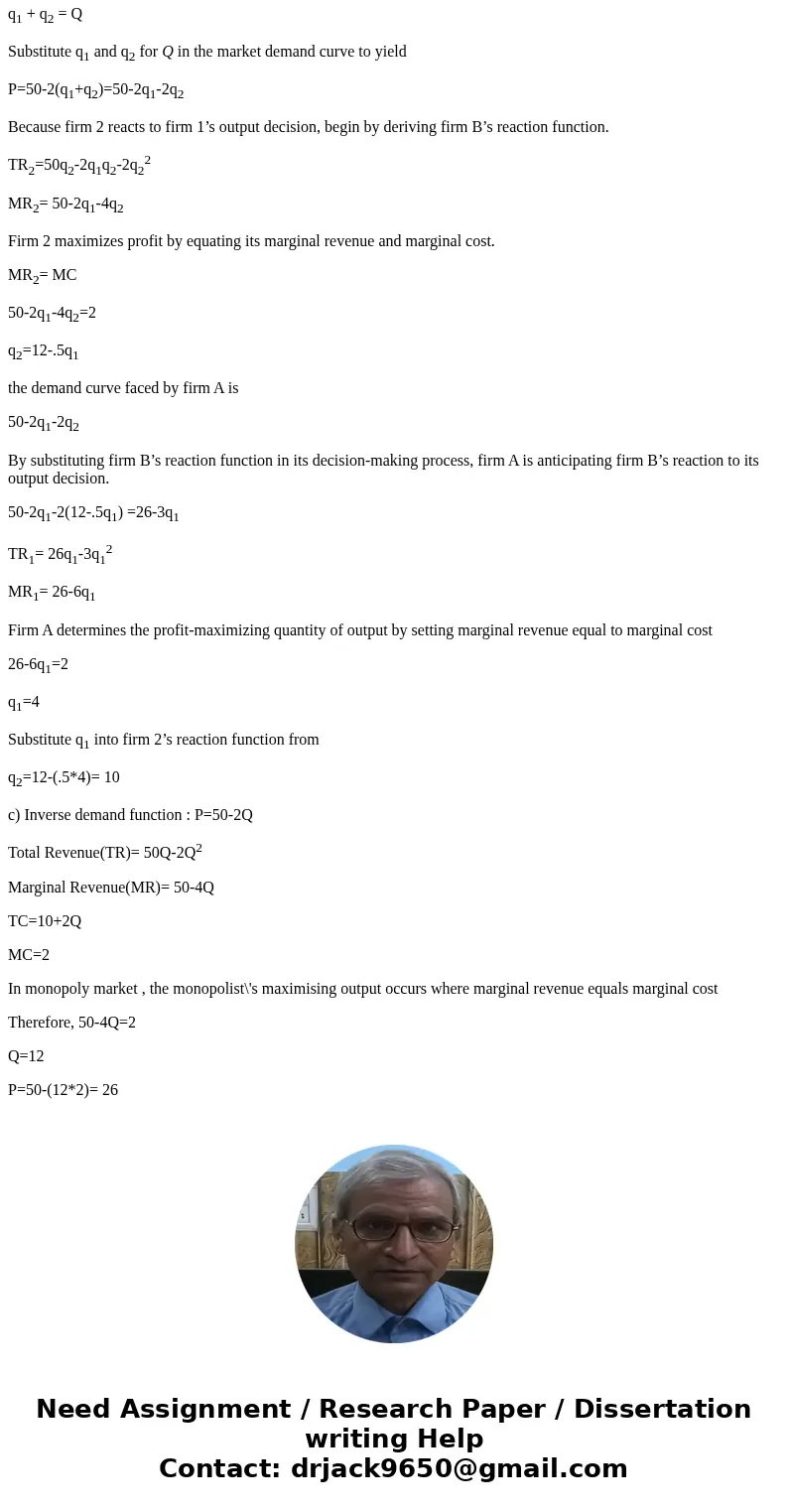3 In a market with two identical firms inverse demand functi
Solution
a) P=50-2Q
As, Two identical firms,therefore :
q1 + q2 = Q
TC= 10+2Q
MC= 2
Profit maximising condition for a firm, MC = MR
P=50-2(q1+q2)
Now, lets look at the demand facing firm 1:
P=(50-2q2)-2q1
TR= (50-2q2)q1-2q12
MR=(50-2q2)-4q1
Now, MR=MC
(50-2q2)-4q1=2
q1=12-.5q2
This is firm one’s best response function. Note that firm two is perfectly symmetric to firm one :
q1=12-.5q2
q2=12-.5q1
Substitute one into the other to get the equilibrium. Then, substitute into the demand curve to get price:
q1=8,q2=8
P=50-2(8+8) = 18
Therefore the cournot equilibrium price = 18, quantity = 8
b)In the Stackelberg model of duopoly, one firm serves as the industry leader. As the industry leader, the firm is able to implement its decision before its rivals.
The market demand curve : P=50-2Q
Two identical firms,therefore :
q1 + q2 = Q
Substitute q1 and q2 for Q in the market demand curve to yield
P=50-2(q1+q2)=50-2q1-2q2
Because firm 2 reacts to firm 1’s output decision, begin by deriving firm B’s reaction function.
TR2=50q2-2q1q2-2q22
MR2= 50-2q1-4q2
Firm 2 maximizes profit by equating its marginal revenue and marginal cost.
MR2= MC
50-2q1-4q2=2
q2=12-.5q1
the demand curve faced by firm A is
50-2q1-2q2
By substituting firm B’s reaction function in its decision-making process, firm A is anticipating firm B’s reaction to its output decision.
50-2q1-2(12-.5q1) =26-3q1
TR1= 26q1-3q12
MR1= 26-6q1
Firm A determines the profit-maximizing quantity of output by setting marginal revenue equal to marginal cost
26-6q1=2
q1=4
Substitute q1 into firm 2’s reaction function from
q2=12-(.5*4)= 10
c) Inverse demand function : P=50-2Q
Total Revenue(TR)= 50Q-2Q2
Marginal Revenue(MR)= 50-4Q
TC=10+2Q
MC=2
In monopoly market , the monopolist\'s maximising output occurs where marginal revenue equals marginal cost
Therefore, 50-4Q=2
Q=12
P=50-(12*2)= 26


 Homework Sourse
Homework Sourse